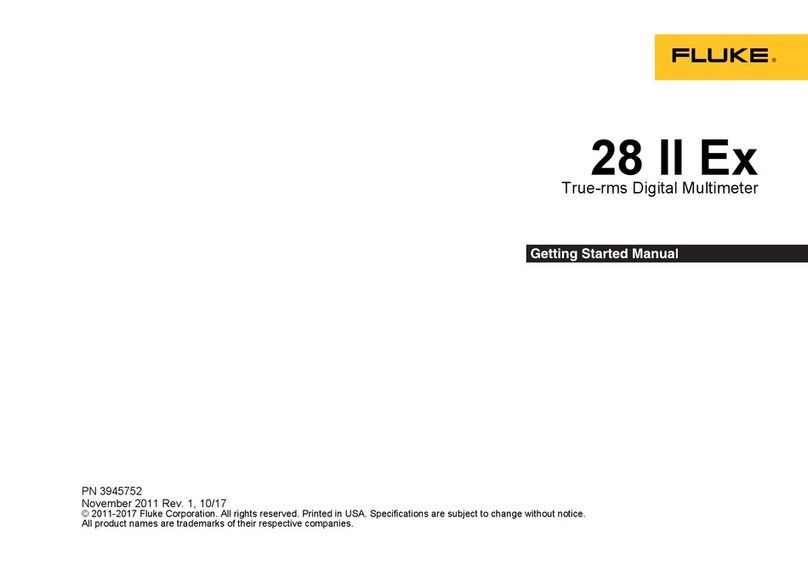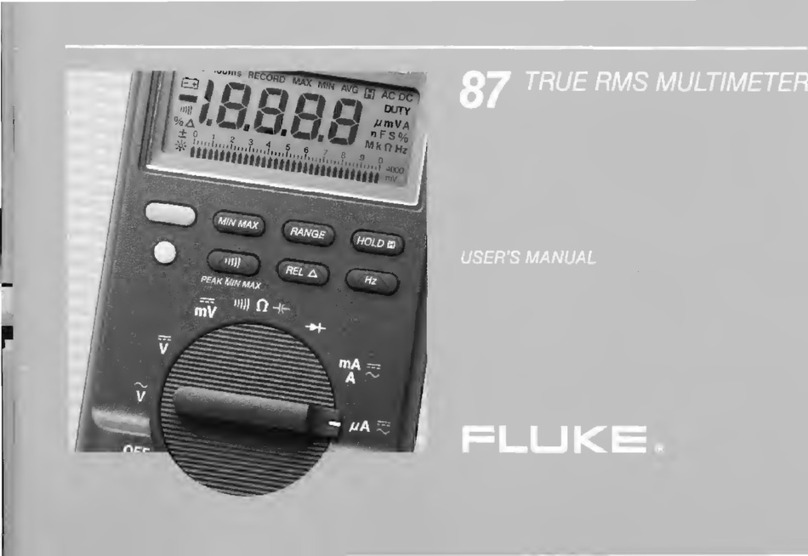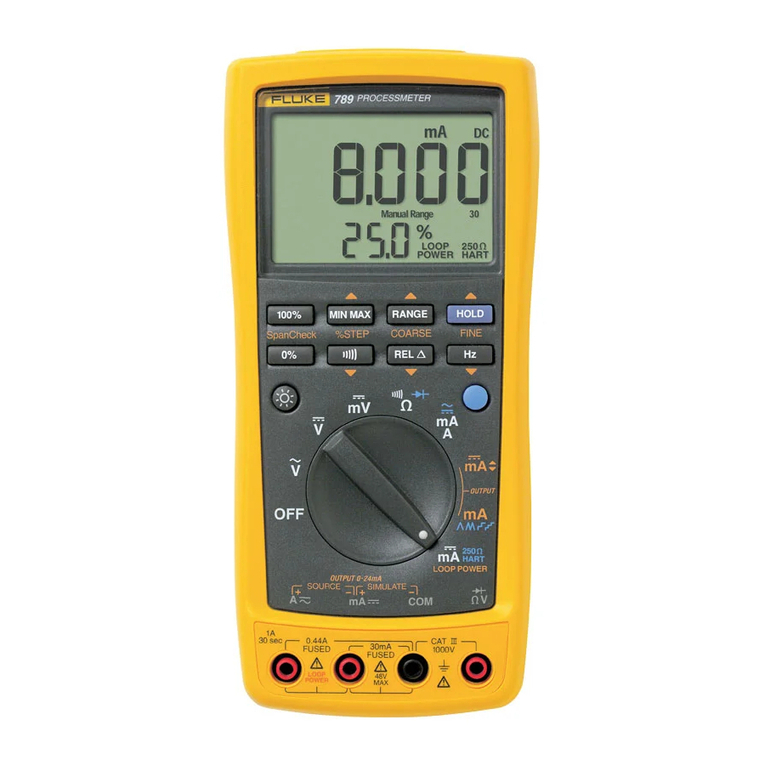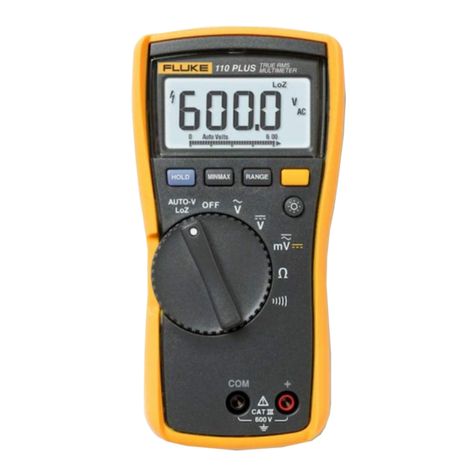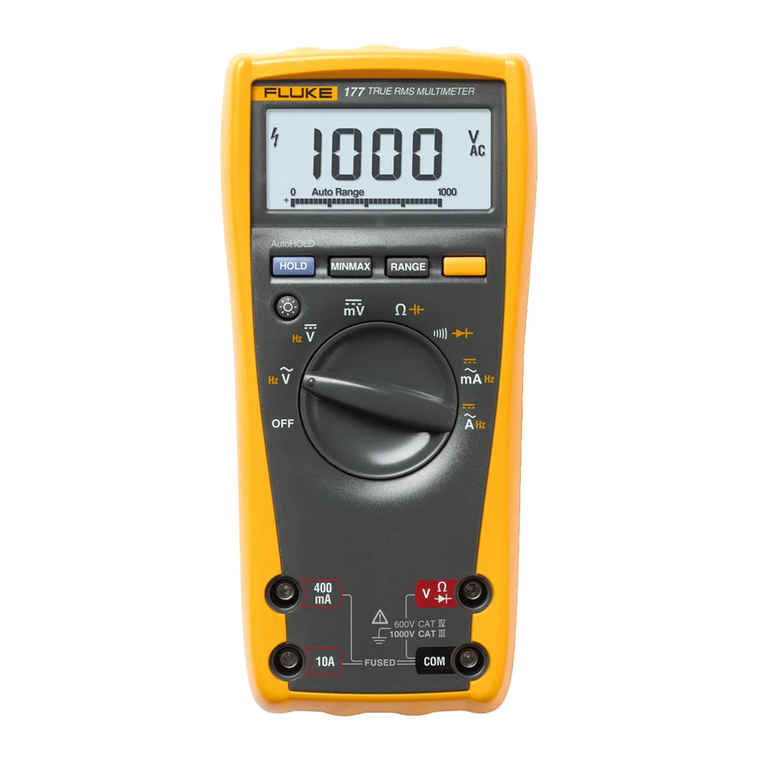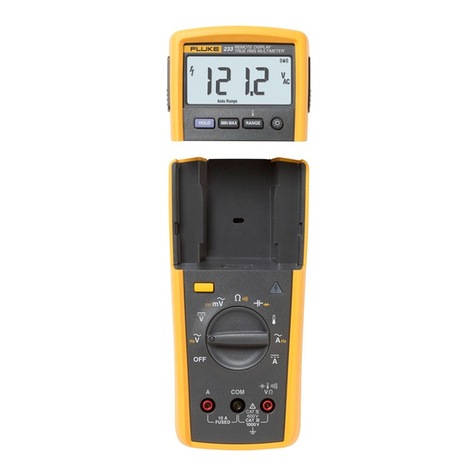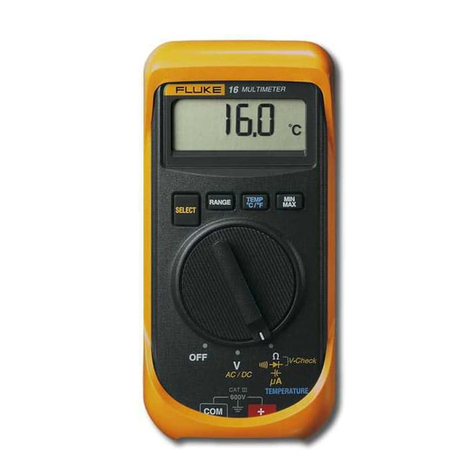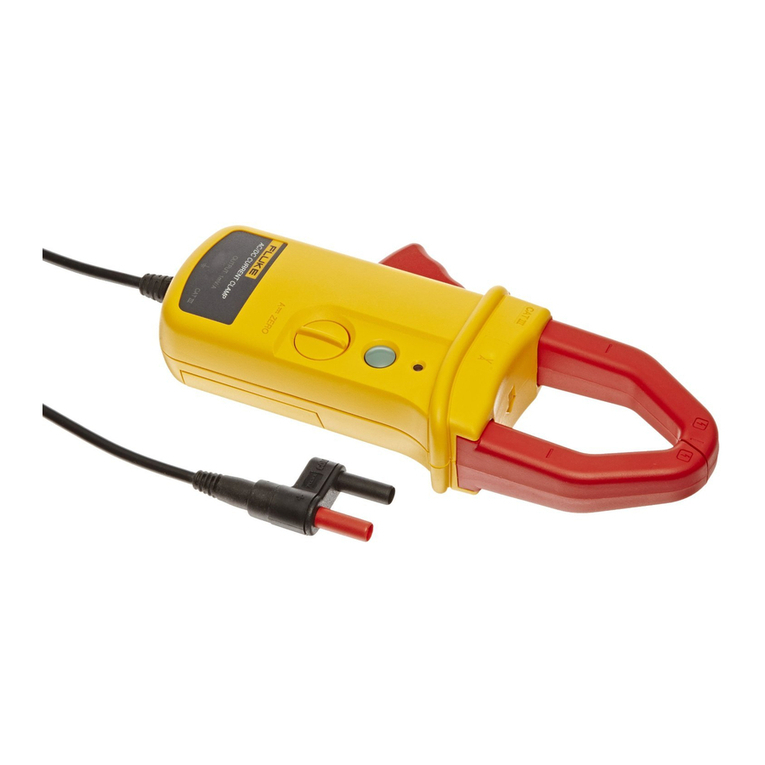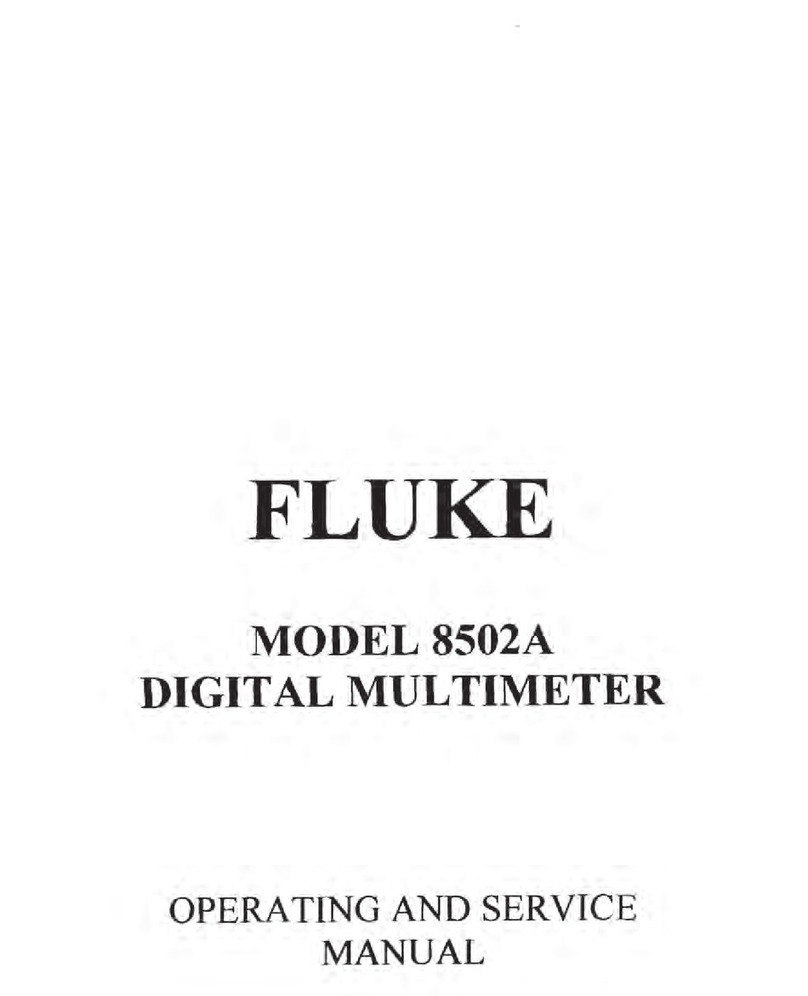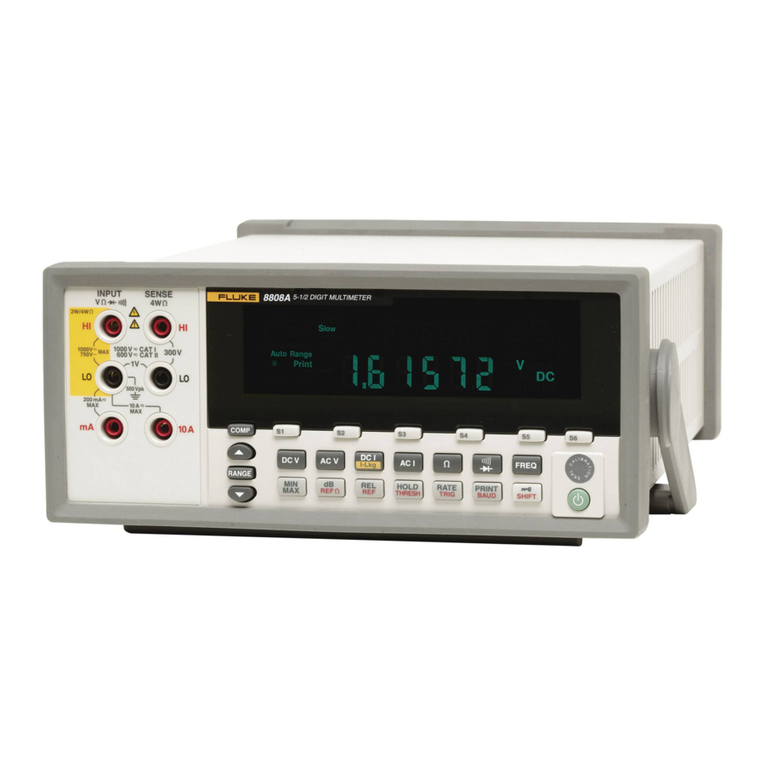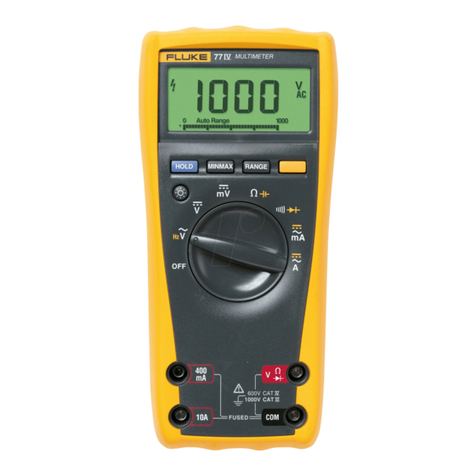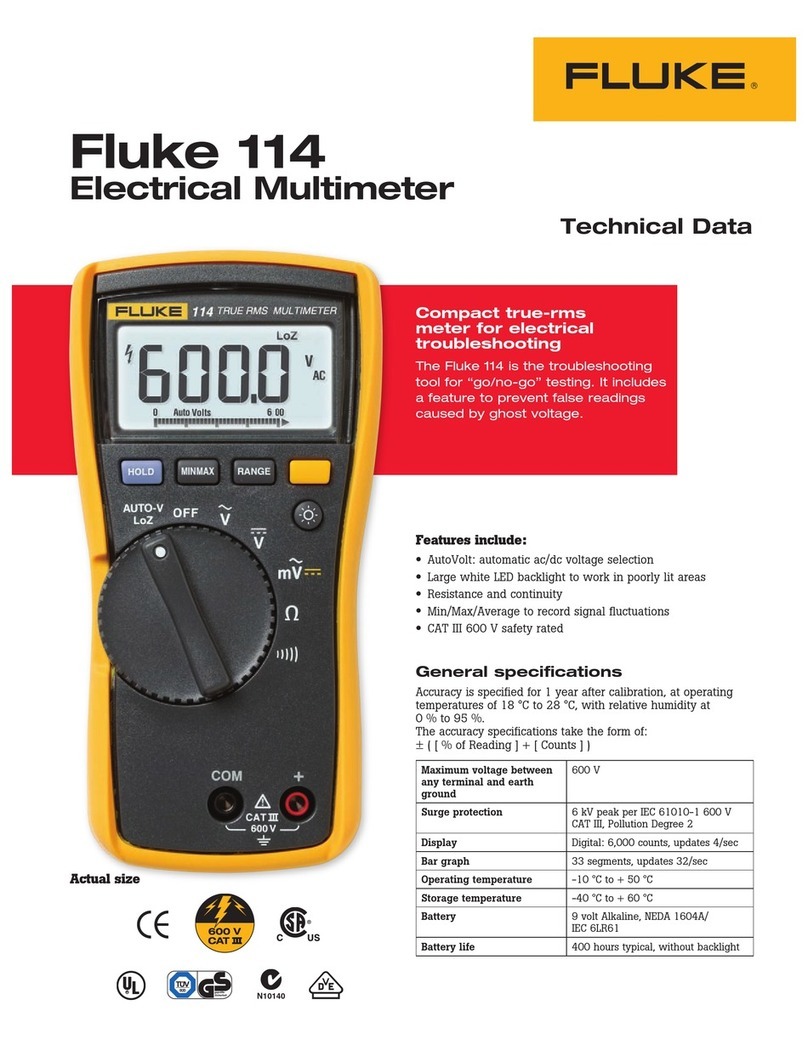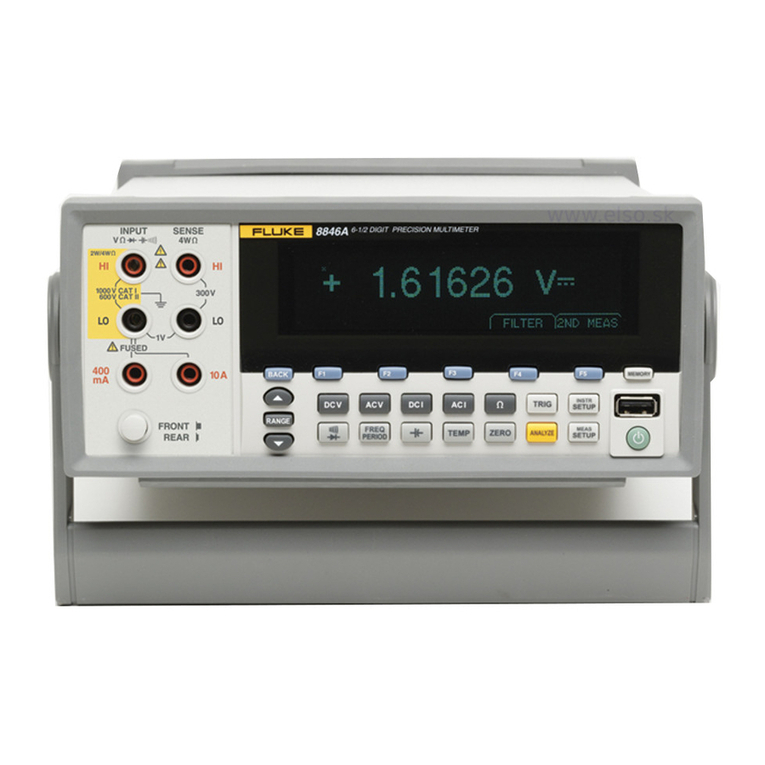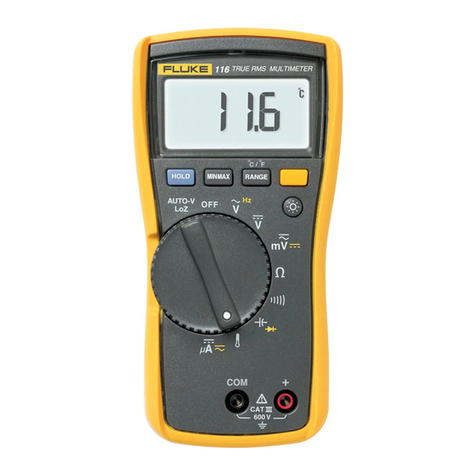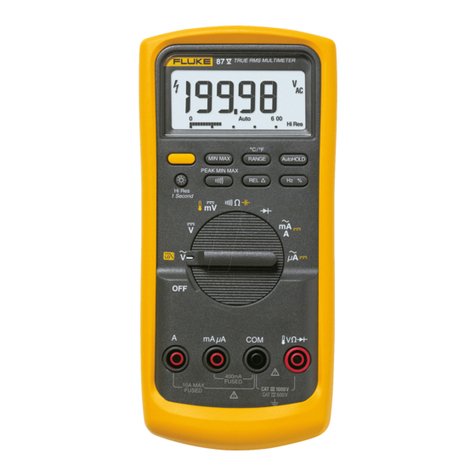
175, 177, & 179
Calibration Information
2
Safety Information
WWarnings and Precautions
To avoid possible electric shock or personal injury, and to avoid possible damage to the Meter
or to the equipment under test, adhere to the following practices:
•Before using the Meter, inspect the case. Do not use the Meter if it is damaged. Look for
cracks or missing plastic. Pay particular attention to the insulation around the connectors.
•Inspect the test leads for damaged insulation or exposed metal. Check the test leads for
continuity. Replace damaged test leads before using the Meter.
•Verify the Meter’s operation by measuring a known voltage. Do not use the Meter if it
operates abnormally. Protection may be impaired. When in doubt, have the Meter serviced.
•Do not apply more than the rated voltage, as marked on the Meter, between the terminals or
between any terminal and earth ground.
•Use caution when working with voltages above 30 V ac rms, 42 V ac peak, or 60 V dc. These
voltages pose a shock hazard.
•Use the proper terminals, function, and range for your measurements.
•Do not operate the Meter around explosive gas, vapor, or dust.
•When using the probes, keep your fingers behind the finger guards.
•When making connections, connect the common test lead before connecting the live test
lead; when disconnecting, disconnect the live test lead before disconnecting the common
test lead.
•Disconnect circuit power and discharge all high-voltage capacitors before testing resistance,
continuity, diodes, or capacitance.
•Before measuring current, check the Meter's fuses (see "Testing the Fuses") and turn OFF
power to the circuit before connecting the Meter to the circuit.
•Do not operate the Meter with the case (or part of the case) removed.
•Use only a single 9 V battery, properly installed in the Meter case, to power the Meter.
•Replace the battery as soon as the low battery indicator (b) appears. With a low battery, the
Meter might produce false readings that can lead to electric shock and personal injury.
•Remove test leads from the Meter before opening the Meter case.
•When servicing the Meter, use only specified replacement parts.
•When replacing the fuses, use ONLY replacement fuses with the amperage, interrupt,
voltage, and speed ratings specified in Table 5.
International Electrical Symbols
The following international symbols appear in this document and on the Meter.
AC (Alternating Current) Earth ground
DC (Direct Current) Fuse
AC or DC Conforms to European Union directives
Important Information. Refer to the
manual. Conforms to relevant Canadian Standards
Association directives
bBattery Double insulated
Confroms to VDE Standards







